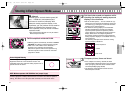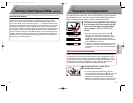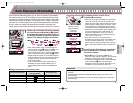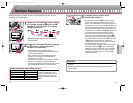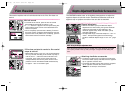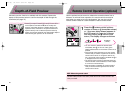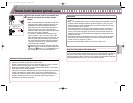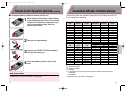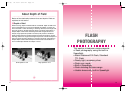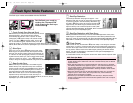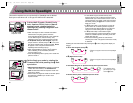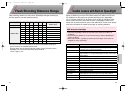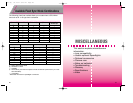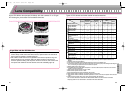
74
FLASH
PHOTOGRAPHY
This section introduces various aspects
of flash photography using the built-in
Speedlight.
• Matrix Balanced Fill-Flash, Standard
TTL Flash
• Ready-light, accessory shoe
• Flash sync mode
• Built-in Speedlight
• Flash shooting distance range
• Usable lenses with built-in Speedlight
75
C O L U M N
C O L U M N
About Depth of F
About Depth of F
ield
ield
Basics of the relationship between focus and depth of field are
explained in this section.
•Depth of field
When focusing, depth of field should be considered. Depth of field is the
zone of sharpest focus in front of and behind the subject on which the
lens is focused. It varies according to shooting distance, focal length and,
above all, aperture. Smaller apertures (larger f-numbers) will produce a
deeper depth of field where the background and foreground become
sharper; larger apertures (smaller f-numbers) will produce a shallower
depth of field where the background becomes blurred. Similarly, shorter
shooting distance or longer focal length will produce a shallower depth of
field, and longer shooting distance or shorter focal length will produce a
deeper depth of field. Note that depth of field tends to be shallower in
front of and deeper behind the subject in focus.
Small aperture f/22 Large aperture f/2.8
F65 (E) 02.12.27 5:43 PM Page 74



